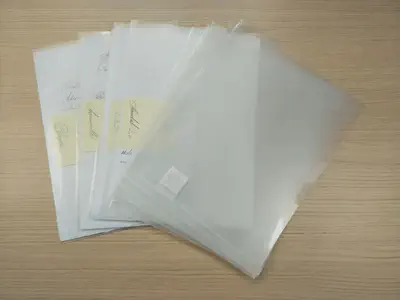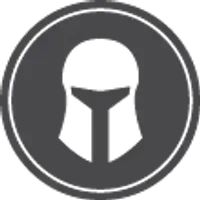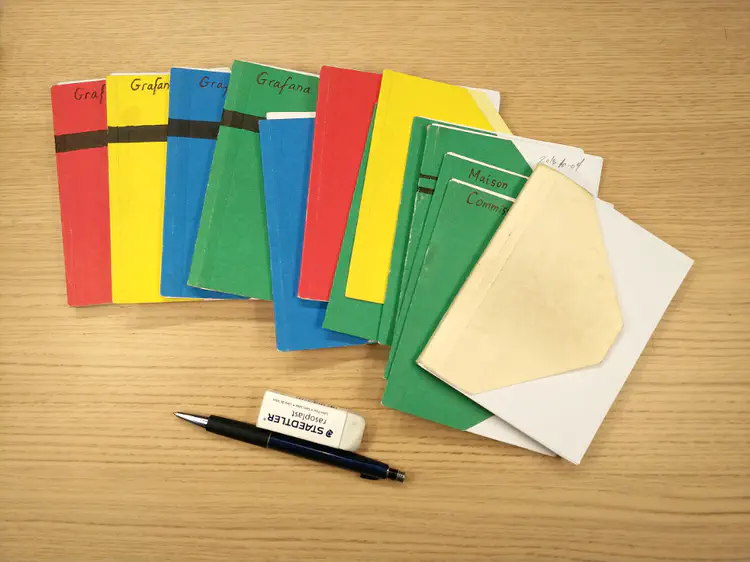GTD stack and project management
My organization systems
This page is part of a series on journaling.
Introduction
Incompleted tasks generate anxiety: promises made, to do tasks, unfinished projects, upcoming events, unresponded communications. The anxiety generated by these thoughts can be alleviated by capturing them and organizing them in a reliable system. My system for organizing and managing projects is an almost exact application of the techniques taught by David Allan in Getting Things Done.
Recap of the GTD system
Here’s a quick recap the stuff processing with GTD. In GTD, Stuff is notes and messages that are collected into inboxes (see the capture notebook).
There are exactly 7 types of things managed in GTD, and there is a hard boundary between those categories.
- Projects
- Projects material
- Waiting for
- Calendar
- Actions
- References
- Ideas
Any item you cannot classify or modify into one of the above categories belong either to:
- Stuff, non-processed information, non-actionable as-is.
- Trash

Material
Among the seven types of things managed with GTD, four are lists: projects, waiting for, actions, ideas. In the GTD diagram above, the lists are identified with a coloured border: blue, yellow, green, red.
These lists are very dynamic — there are many additions, subtractions and re-ordering of items. In Getting Things Done, David Allan recommends writing list items on loose papers, one item per piece of paper. This makes it easy to manipulate, re-prioritize and display list items in front of you.
My supply of paper comes from regular packs of 500 sheets of US letter paper which I bring to a printer to cut in quarters with a commercial paper cutter. The ‘8½ × 11 ÷ 4’ format is large enough to be written on, and small enough to be handled easily. It is also more compact that full sheets, and a bit less wasteful. I use both sides of the sheets before throwing them in the recycling bin.
I made colour coded sleeves to organize list items by type and by context. The sleeves are cut from file folders.
In summary:
- Write 1 item per sheet.
- Colour coded sleeves cut to accomodate 4¼” × 5½” paper.
- The sleeves are colour coded by type of list.
- Use multiple sleeves of the same colour to organize list items by context. (See contexts below).
Lists and colour code
Manila — blank sheets
I keep a stock of blank 4¼” × 5½” paper (8½” × 11” ÷ 4) in a box. I carry a supply of blank sheets in the manila folder with my GTD stack. When an item from a list is completed, I cross the recto side and insert it back into the manila folder to use the verso.
Green — actions
There is a strict definition if action in GTD. It is a concrete physical movement, with a verb. We can visualize its execution. Completing an action moves a project towards its completion.
In GTD, there are three kinds of work: planning work, doing planned work, and working on interruption. Here is how I work with the actions list in the three modes of work.
In the processing/organization/planning phase:
- Identify and extract concrete actions from stuff.
- Write one action per sheet of paper.
- Write projects (objectives requiring multiple actions) in the projects list (blue folder).
In the prioritization/execution phase:
- Take the green folder of the current context.
- Scan through and prioritize items according to time available, energy, and urgency.
- Stack the prioritized actions on the desk, and put the rest back in the folder.
- The stack of actions are like stepping stones on a path. Each sheet is an action you can visualize and physically execute with your motor system.
- Know that you have made a conscious decision about what you will not be completing right now. Only a thorough and recently reviewed system can give you this peace of mind.
When dealing with interruption work:
- Do an instant processing of the interruption’s content (it’s stuff). Write new to do actions on blank sheets.
- Place actions to do now on the top of your priority actions pile.
- When the interruption is resolved, the following sheet on the pile gets you right back on your previous path.
Blue — projects
The projects inventory. The GTD system uses a large definition of project. It includes any goal which requires more than one action to complete.
Yellow — waiting for
The GTD Waiting For list.
Red — ideas
In GTD, this is called Someday/Maybe.
Project material
To organize project material (notes, planning, brainstorming), I use transparent plastic sleeves which open on two sides.
Of course, most of my project material is digital. I have a separate post that describes how I organize my Documents directory.

Contexts
Lists are organized by contexts by having multiple folders of a type, with a label or symbol identifying the context.
I use the same GTD system for work and personal life. The contexts keep the actions, projects, waiting for and ideas separate.
My personal life contexts are defined in sub-contexts:
- General — things I can do anywhere, on the computer or on the phone.
- Home — things I must do at home.
- Beancount — accounting and bookkeeping tasks.
- Errands — things to do while I’m out doing errands.
Digital systems
I tried several digital and paper tools over the past 15 years. The paper-based system described in this post is the most stable and functional one for me. I must conclude that I prefer my “external brain” on the near side of the human–machine interface.
In a digital system, I inevitably feel the underlying database schema. Mental models adapt and change. Database schemas are relatively immutable and their constraints are always felt through the interface when the system’s behaviour doesn’t follow our mental model.
As a counter-point, I notice that team collaboration justifies and requires a digital system, or even a SaaS.
Taskwarrior
If I had to recommend a sofware for personal task and project management, it would be Taskwarrior.

Taskwarrior is Free and Open Source Software that manages your TODO list from the command line. It is flexible, fast, and unobtrusive. It does its job then gets out of your way.
I loved to learn and use it. It has features for contexts and projects, compatible with Getting Things Done concepts. I was impressed by the colour coding and the numerous lists and reports that you can produce.
One of the most innovative features is the algorithmic urgency calculation for tasks. The more meta-data is attached to a task (project, tags, priority, due date, blockers), the higher the urgency coefficient. Urgency coefficients can be customized, but I found the defaults were pretty good.
Takeaways
- GTD is a system for managing work while reducing anxiety and increasing productivity.
- Work happens in three modes:
- Planning work
- Executing planned work
- Managing interruptions
- There are 7 types of things managed in GTD, and there is a hard boundary around each item type.
- The system described on this post is one of the most stable and functional systems in my journaling collection.
- It is directly inspired by Getting Things Done, a methodology created and popularized by David Allen.

